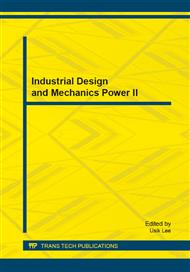p.981
p.985
p.990
p.994
p.999
p.1005
p.1012
p.1019
p.1023
The Reconstruction and Innovation of Regional Industry Design
Abstract:
Because studies of traditional regional creations neglected the main role and value of human, ignored daily goods for the service of ordinary people and the relevance with the nonmaterial culture resources such as folk literature, folk rituals, folk beliefs, regional design has turned into the imitating, patching and borrowing from traditional forms, styles and prototypes, and ultimately become an over-elaborated decorative display, and gone further and further away from the essence of life. Therefore, reconstruction of both the implicit and explicit knowledge systems of the regional cultural resources becomes necessary for the purpose of finding out the deep value of regional cultural creations. We should explore deep into the relationship system involving people, matter, place, time and meaning through events of culture and life to activate the value and meaning value of traditional regional creations in contemporary life and in accordance with the sense of belonging in cultures.
Info:
Periodical:
Pages:
999-1004
Citation:
Online since:
October 2013
Authors:
Keywords:
Price:
Сopyright:
© 2013 Trans Tech Publications Ltd. All Rights Reserved
Share:
Citation:


